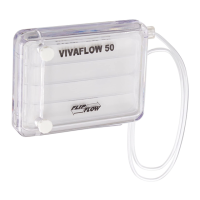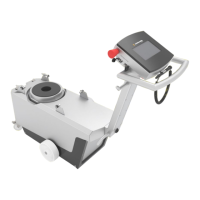5
Installation
The weigh cells are available in various
versions. If you have ordered special
options, the weigh cells are equipped
with the specified features at the
factory.
Storage and Shipping Conditions
– Once the equipment has been removed
from the packaging, it may lose accu-
racy if subjected to strong vibration.
– Do not expose the equipment to unnec-
essarily extreme temperatures, moisture,
shocks, blows or vibration.
$ It is a good idea to save the box and all
parts of the packaging until you have
successfully installed your equipment.
Only the original packaging provides
the best protection for shipment.
$ Before packing your equipment,
unplug all connected cables to prevent
unnecessary damage.
$ Gravitational acceleration 0 300 m/s
2
Do not expose the equipment to
gravitational acceleration in excess of
0 300 m/s
2
(unless additional equip-
ment is installed on the load receptor).
Incoming Inspection
The customer shall inspect the
product and packaging immediately
upon delivery for proper functioning,
completeness and absence of defects.
This is to be performed in an incoming
inspection within 10 days of delivery of
the product or service. The incoming
inspection must take place before the
equipment is installed. Any obvious
defects, errors, or incorrect delivery
must be reported in writing. Defects
detected at a later date must be
reported in writing immediately upon
detection.
Be sure to perform the following as
part of the incoming inspection:
– We recommend performing a repeat-
ability test using an auxiliary draft
shield to make sure the weigh cells were
not damaged in transport. You can use
the YAC01ED display and control unit
or the CAS-Suite software as an aid for
this test.
Equipment Supplied
– Weigh cell
– Electronics module
– Installation instructions (this document)
– AC adapter with country-specific power
plug adapter
– Special accessories as listed on the bill
of delivery or in accordance with any
customer-specific agreement
Installation Instructions
The equipment is designed to provide
reliable results under normal ambient
conditions. If you have any questions
or difficulties when developing your
weighing system, please contact the
specialists at Sartorius. When designing
and setting up your weighing system,
please observe the following so that
you will be able to work with added
speed and accuracy:
– Avoid exposing the equipment to the
effects of extremely high temperatures;
for example, caused by other electronic
components, heaters or direct sunlight.
– Protect the equipment from direct
drafts that come from open windows or
doors.
– Avoid exposing the equipment to exces-
sive vibrations during weighing; for
example, caused by motors or valves
– Protect the equipment from aggressive
chemical vapors.
– Avoid extreme moisture.
Switch the system to the standby mode
when not in use.
– Avoid the effects of magnetism.
! Always calibrate/adjust the weigh cells
after transport:
– WZA...-N, WZA224ND:
External calibration
– WZA...-NC: Internal calibration
– Equipment installed on the load
receptor can interfere with weigh cell
functions. The user accepts all liability
for production release and the speci-
fications of the entire equipment. The
specifications attained by your system
may differ from those listed in the
"Specifications” Chapter.
Conditioning the equipment:
Moisture in the air can condense on the
surface of a cold weighing instrument
or other device whenever it is moved
to a substantially warmer place. If you
transfer the equipment to a warmer
area, make sure to condition it for
about 2 hours at room temperature,
leaving it unplugged from AC power.
Connecting the Weigh Cell to the
Electronics Module
– Plug the connecting cable into the
socket on the electronics module and
the male connector on the weigh cell
Connecting an Optional Display and
Control Unit
– The YAC01ED display and control unit
can be installed while operations are
running (hot plug-in).
§ Plug the cable into the socket on the
electronics module.

